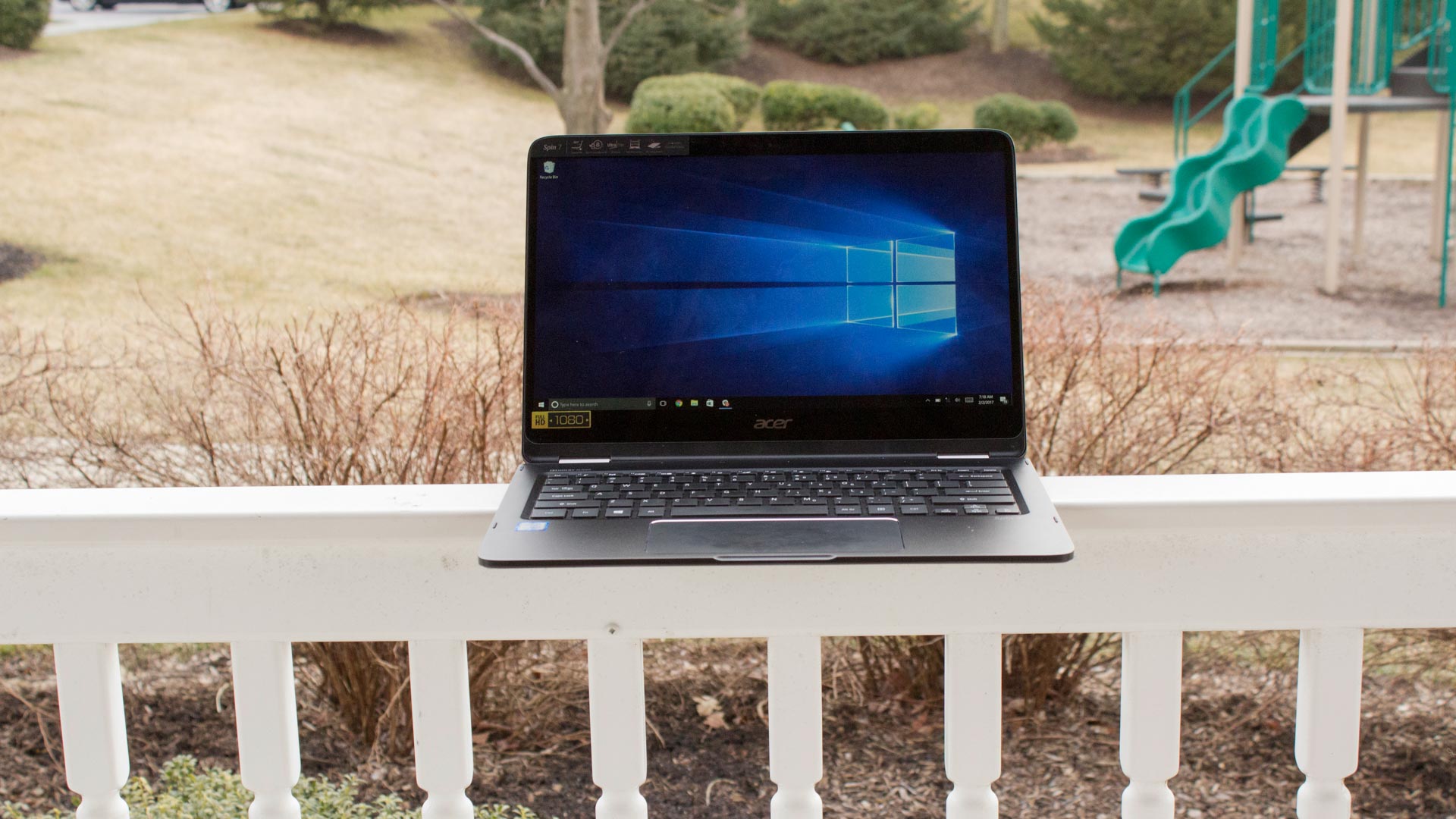Why you can trust TechRadar
Because it goes the non-traditional route of honing in on a mobile processor, the Acer Spin 7 doesn’t need fans to keep cool, nor does it need to be plugged in at all times to stay productive. It exercises an acceptable battery life, despite failing to live up to the company’s eight-hour promise.
You may also be shocked to learn that opting for a mobile processor in the Acer Spin 7 makes it, dare we say, more portable (gasp). You can’t make the world’s thinnest convertible without sacrificing some of the chunkier components. That means no full-size CPUs and, thankfully, no spinning hard drives.
In fact, storage space is rather limited, and not the fastest, with the Acer Spin 7. It’s a bit disgruntling to see that not only is it limited to just shy of 256GB of SATA SSD space, but there’s only one configuration priced at $1,249 (£1,099 or AU$1,999).
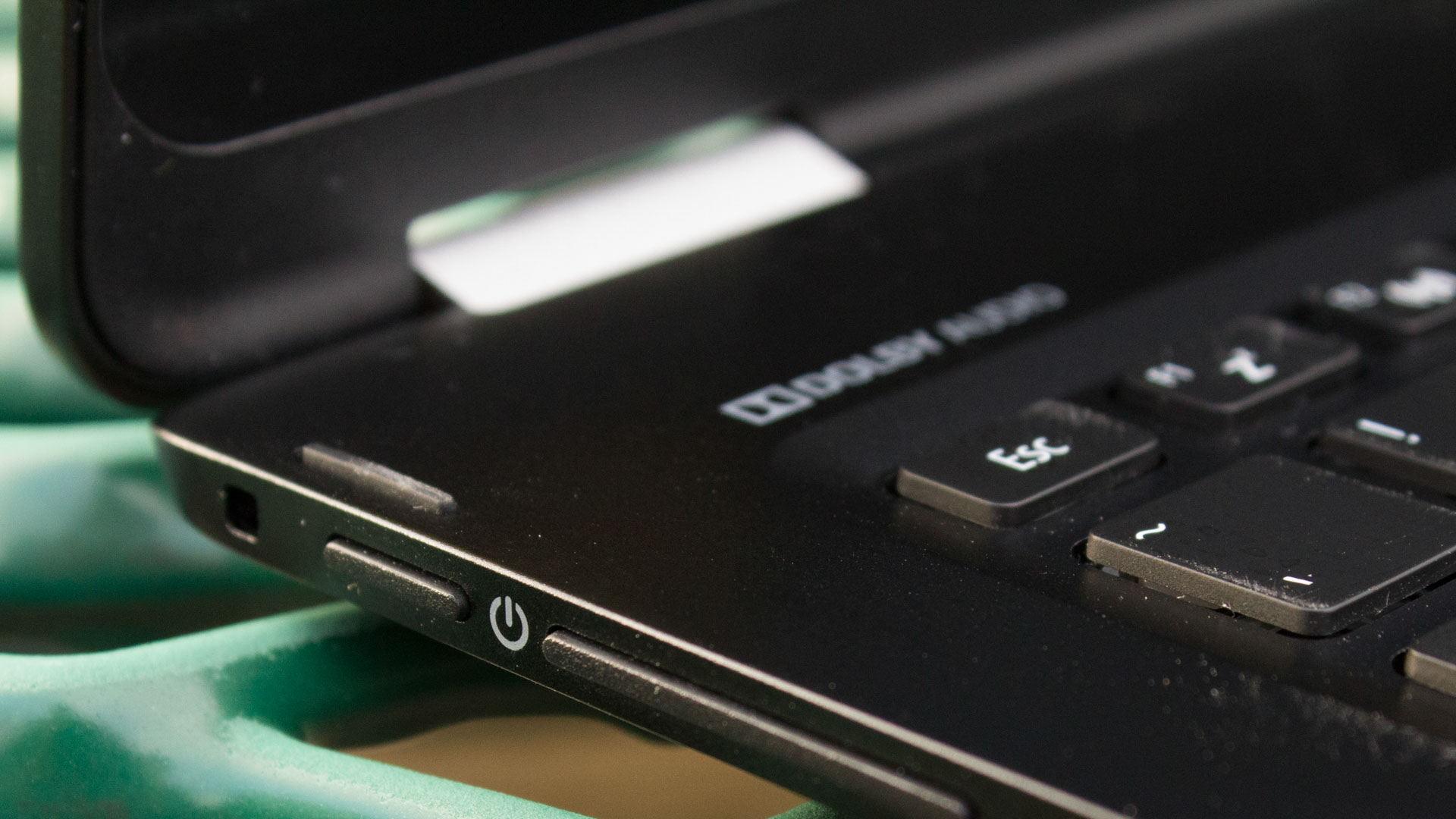
What you see is what you get with the Acer Spin 7, and there’s no room for additional storage; at least with the Macbook, there’s the option of a more capacious – and faster, PCIe flash – disk drive, even if it costs an arm and a leg to add on.
Arguably, the Acer Spin 7’s strongest advantage over the comparably-specced MacBook is the inclusion of a second USB-C port. Finally, you can charge your laptop while also connecting it to an external monitor over DisplayPort connection through USB-C. Revolutionary, we know.
Aside from the pair of USB-C twins and a 3.5mm headphone/mic jack, the ports are kept to a minimum. It does, however, come with a couple of Acer-branded dongles for connecting HDMI or USB Type-A peripherals, a pleasant surprise by today’s standards.
As far as screen resolutions go, the Acer Spin 7’s isn’t anything special; it is, after all, just a plain old, 1080p display. Still, the Corning Gorilla Glass-coated IPS panel bears enough brightness and saturation that the difference in 1080p and 1440p is negligible. Plus, text is generally big enough to be legible by default, an added bonus.
Sign up for breaking news, reviews, opinion, top tech deals, and more.
Here’s how the Acer Spin 7 performed in our suite of benchmark tests:
3DMark: Time Spy: 249; Sky Diver: 2,501; Fire Strike: 632
Cinebench CPU: 219 points; Graphics: 31 fps
Geekbench: 3,024 (single-core); 5,562 (multi-core)
PCMark 8 (Home Test): 2,409 points
PCMark 8 Battery Life: 3 hours and 37 minutes
Battery Life (TechRadar movie test): 5 hours and 33 minutes
Performance
The Acer Spin 7 is by no means a power hog. Yeah, it packs a Kaby Lake Intel Core i7 processor and Intel 620 Graphics, but you can tell by looking at our DirectX 12 stressor alone, Time Spy, that this isn’t a machine meant for rigorous media editing or high-end 3D games.
If we had to categorize it, we might say this is a laptop designed for writing in coffee shops. You don’t have to plug it in often, thanks to a battery life that exceeds 5 and a half hours of regular use, and it’s snappy enough to get the job done.
At the time writing of this review, we have eight Chrome tabs open and two other windows off to the side, and it’s running seamlessly.
On its own, the Acer Spin 7’s battery isn’t entirely a letdown, but when compared to similarly specced models, its longevity becomes curious. The Asus ZenBook Flip UX360, for instance, performed in PCMark8 tests for a whopping 5 hours and 51 minutes. The Acer Spin 7 on the other hand? A measly 3 hours and 37 minutes.
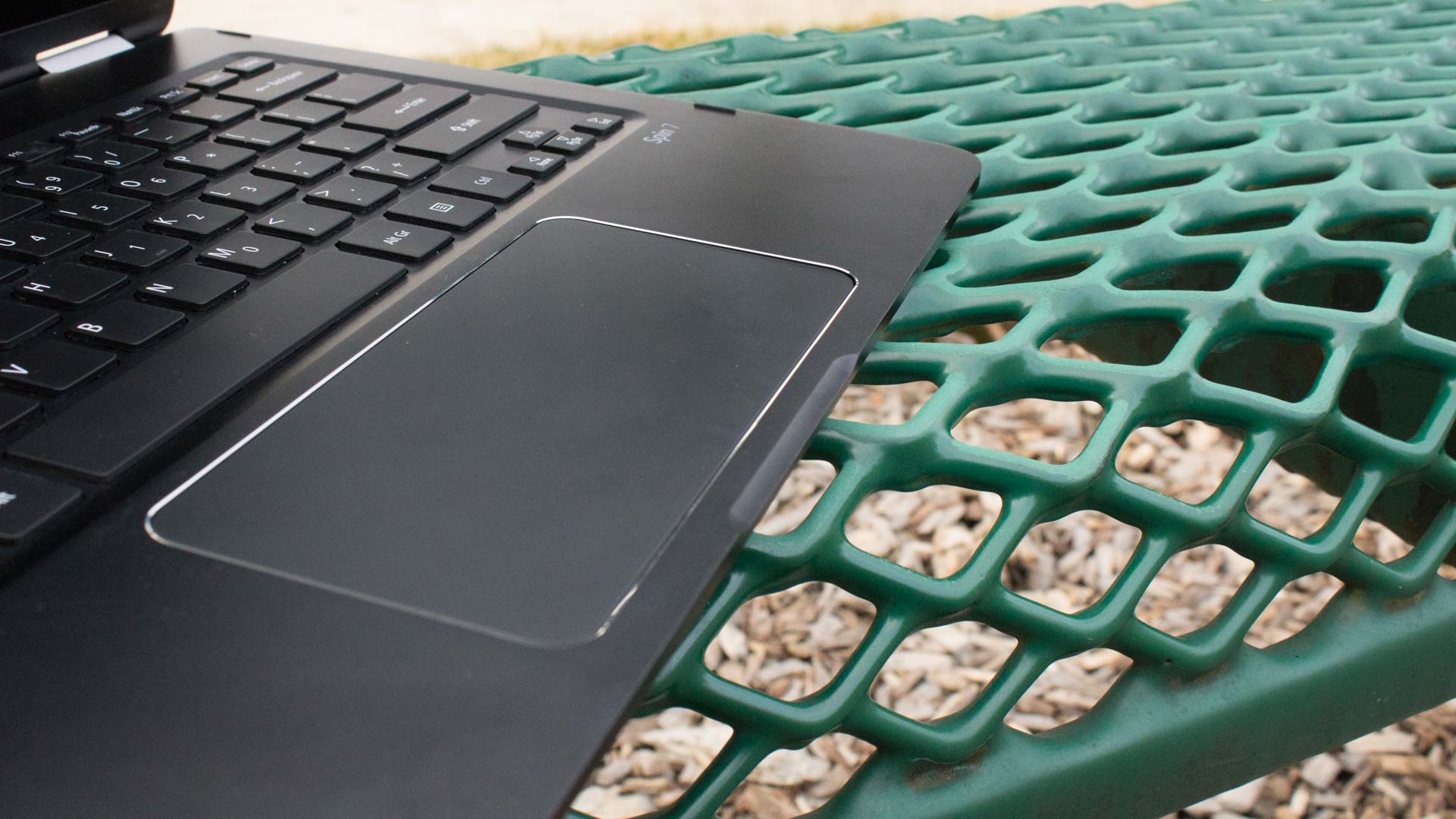
While its result in our anecdotal battery life test was a much longer 5 hours and 33 minutes, that’s still a far cry from Acer’s promised 8 hours of juice.
Luckily, the Acer Spin 7 gets its power from USB-C, which you would expect to make the charging hardware more portable. That would be the case, too, were it not for the horrific oversight that is the Acer Spin 7 power cable, essentially a sizable, ugly power brick caught between two cables (see also: photos of snakes digesting rats).
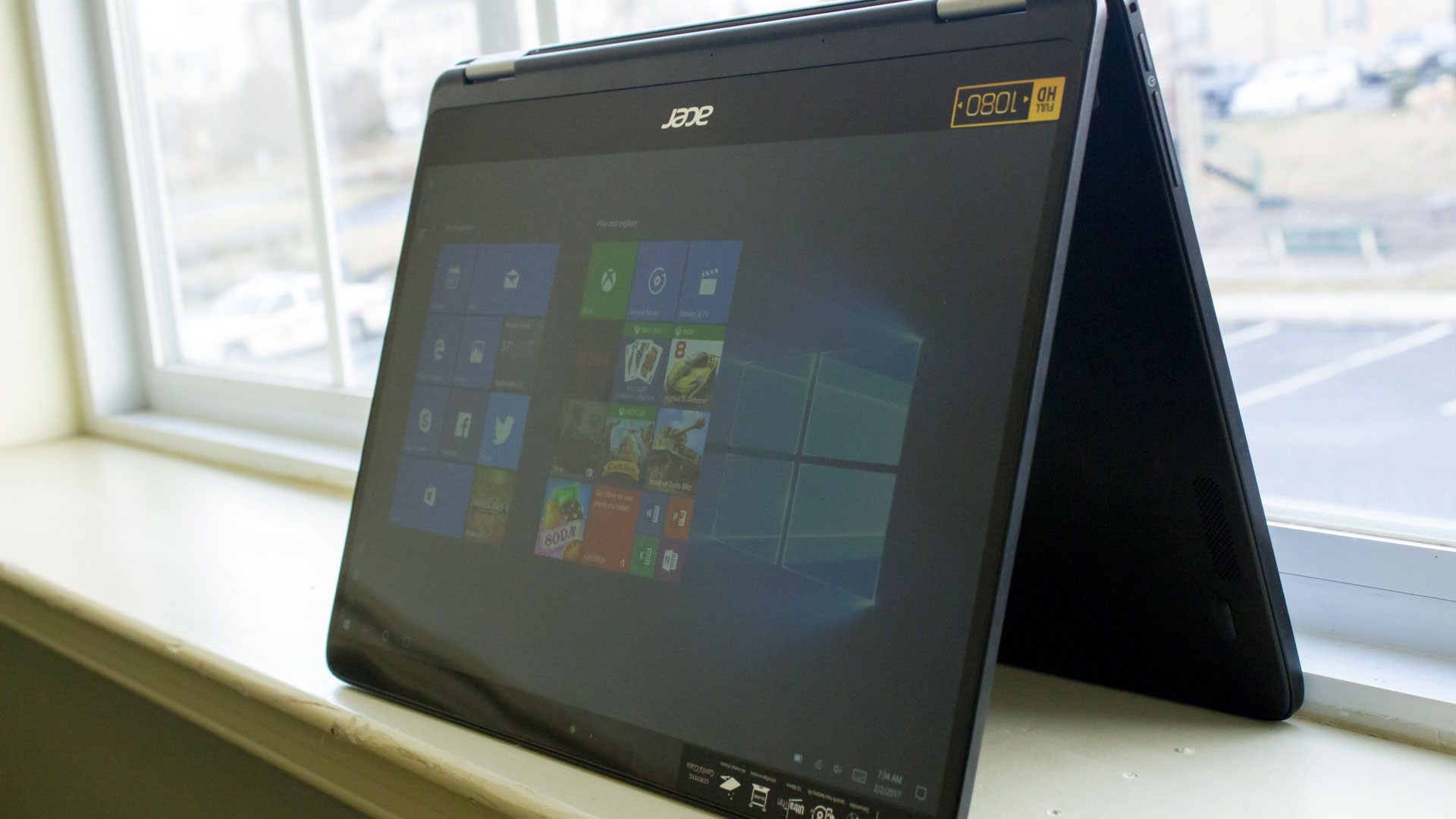
Ultimately, the Acer Spin 7 is a laptop that’s full of silver linings, but only because it needs to be in order to justify the premium. The $1,249 (about £999, AU$1,998) tag isn’t too much to ask for a notebook of this build quality, especially considering it can be used as a tablet with 10 points of touch recognition too, but there are also a handful of ways the Acer Spin 7 falls short of justifying that price.
We liked
As a general concept, there is a lot to love about the Acer Spin 7. The metal unibody chassis is hardened and sleek, complemented by one of the great laptop keyboards in recent memory. Despite helming a Y-series processor, we’re thankful it’s the top-end model and not a new-gen Core m3.
For your cash, it’s a comparable deal to one of its closest competitors, thanks to 2-in-1 functionality; and, you know what they say: two USB-C ports are better than one. The 360-degree hinge is both attractive and functional, but again, there certainly isn’t any spinning involved.
We disliked
While it passes with flying colors in many regards, the Acer Spin 7 is not entirely without flaws. The company should have made the trackpad, presumably a must for productivity tasks, a priority input over the touchscreen. Sure, it’s big and shiny, but it’s not easy to dismiss the very forceful push required to click things.
That goes without mentioning the keyboard which, while fantastic in its own right, is missing the LED backlighting we would expect from a notebook of this price. Plus, between middling battery life, slower storage and not quite as sharp a screen in comparison, the Spin 7 struggles to position itself against key rivals, like the MacBook.
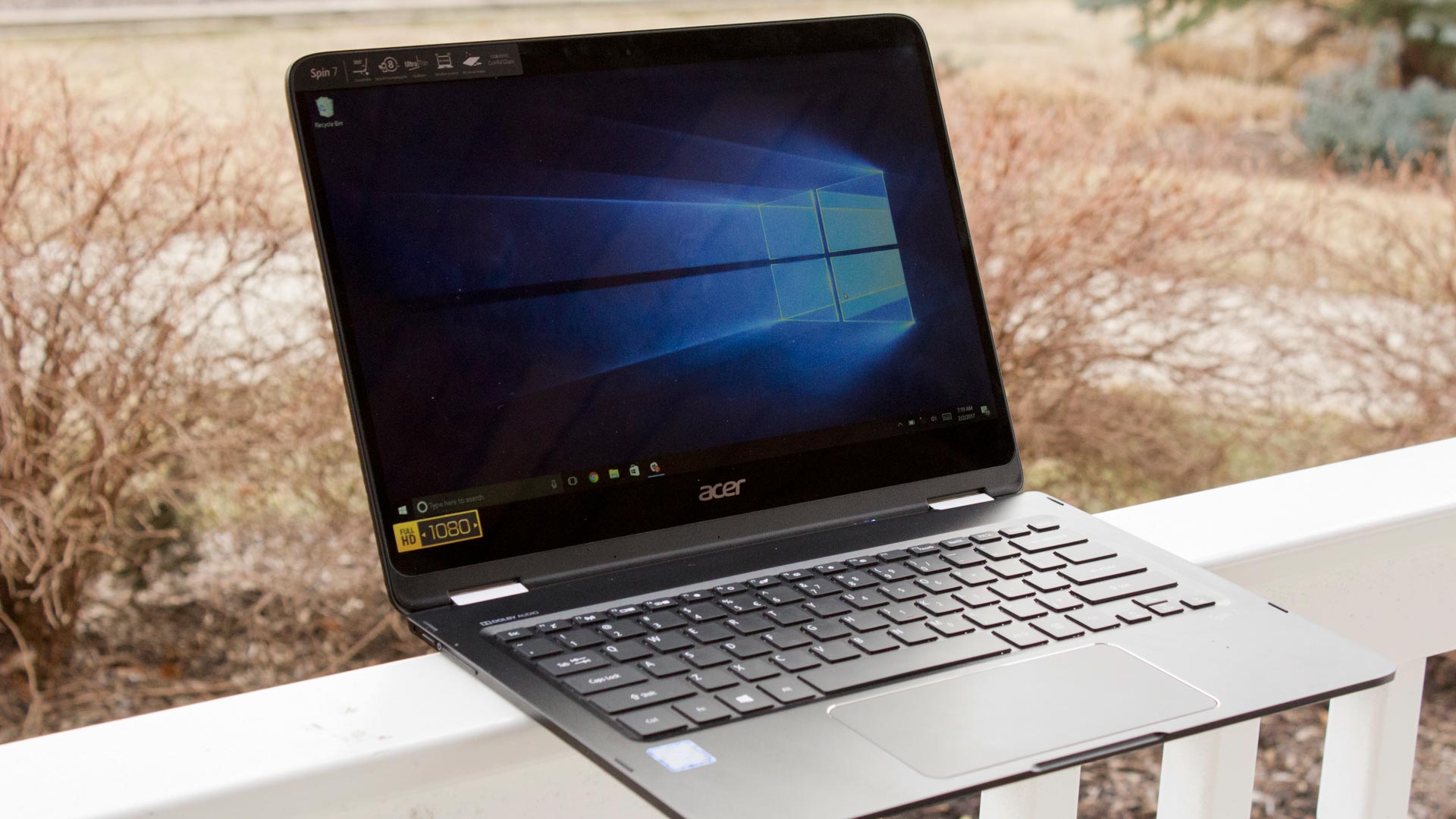
Final verdict
The Acer Spin 7 is a lavish 2-in-1 device to its core, but aimed at a wider crowd. Highlighting four different modes – laptop, tent, display and tablet – it’s treated to a flashy design with patches of silver placed about. The Acer Spin 7 keeps it simple with only a small selection of ports complementing its rounded edges and a punchy keyboard that, besides the lack of keyboard lighting and average battery life, is otherwise impressive.
All things considered, this is a respectable introduction to the Acer Spin franchise. Hopefully the sequel doesn’t make us want to buy a mouse and a pair of headphones. And, maybe, just maybe next time we’ll catch a glimpse of the utopian future wherein all super-thin laptops can last for a full day.

